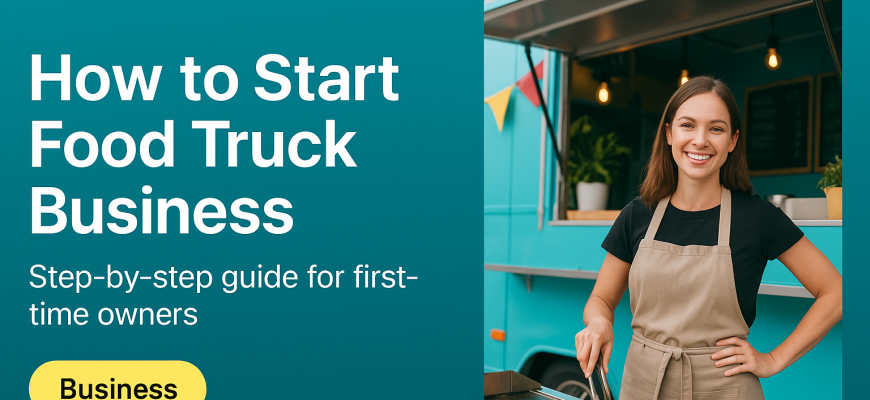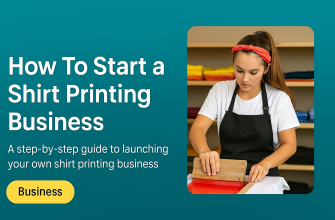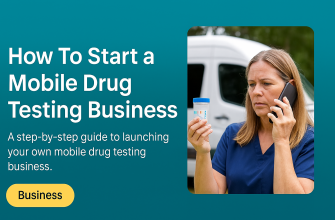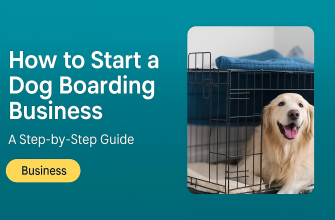Starting a food truck business can be an exciting and profitable venture, especially for women looking to break into the food industry with flexibility and creativity. The food truck industry has grown significantly over the past decade, offering a chance to build your brand and serve delicious meals without the high costs of a brick-and-mortar restaurant. Women, in particular, are bringing unique flavors and fresh perspectives to this space, turning passion for cooking into a sustainable livelihood on their own terms. As a business coach who’s helped many women launch successful ventures, I know that starting a food truck is more than just a business – it’s an opportunity to share your creativity, gain independence, and empower yourself through entrepreneurship. This guide is here to support you through each stage — from planning and prep to launch and growth.
- Step 1: Develop Your Unique Food Truck Concept
- Step 2: Write a Solid Business Plan and Budget
- Step 3: Secure Funding and Resources
- Step 4: Navigate Permits and Licensing
- Step 5: Choose Your Truck and Equipment
- Step 6: Brand Your Business and Spread the Word
- Step 7: Pick the Right Locations
- Overcoming Challenges as a Woman Entrepreneur
- Fueling Your Dream
Step 1: Develop Your Unique Food Truck Concept
Every great food truck begins with a vision. What delicious idea lights you up? To stand out in the food truck industry, you need a concept that reflects your passion and appeals to your target audience. Consider your personal culinary expertise and the kind of food that excites you most – maybe it’s gourmet tacos, vegan desserts, fusion cuisine, or your grandmother’s recipes. Research your local market for gaps or trends: is there a cuisine missing in your area, or a food trend (like gluten-free or plant-based options) you can tap into? Also think about dietary niches you could fill (such as a fully vegan or gluten-free menu) if that aligns with your mission. Don’t be afraid to be creative and authentic: your unique perspective is a strength! Once you have a theme in mind, craft a memorable brand identity around it – choose a catchy name, design a fun logo, and even plan the look of your truck to match your theme. For example, if your concept is a dessert truck, will it be a whimsical, pastel-colored van called Sweet Wheels? Make it you. Before finalizing your menu, test your recipes with family, friends, or at small local events to gather feedback. This will not only refine your offerings but also build early buzz. Remember, your concept should reflect who you are and what you love, because that genuine passion will shine through to your customers.
Step 2: Write a Solid Business Plan and Budget
Once your concept is defined, it’s time to get down to business. A well-thought-out business plan is your roadmap from dream to reality. It will help you clarify your strategy and is essential if you need financing. Start by outlining your business vision and goals – what do you want to achieve with your food truck (beyond just “sell great food”)? Next, analyze your target market: Who are your ideal customers and where can you find them? Research your competition (other food trucks or nearby eateries) to figure out how you’ll stand out. Then, detail your menu and pricing strategy – list your signature items and set prices that cover costs yet remain attractive. Be sure to work up a realistic budget: calculate your expected startup costs and ongoing expenses. Opening a food truck is more affordable than a restaurant, but the startup costs can still be substantial – on average it costs about $50,000–$60,000 to launch a food truck business in the U.S.. This includes purchasing the truck (or trailer), kitchen equipment, initial food inventory, permits and licenses, a point-of-sale system, and perhaps legal or consulting fees. Don’t forget to account for ongoing costs like fuel, maintenance, insurance, staff wages (if any), and marketing. It’s better to overestimate costs than be caught off guard. In your plan, also outline a basic marketing plan (how you’ll promote your truck) and financial projections (how much you expect to earn in year 1, year 2, etc.). Having all this in writing will not only guide you but also impress any lenders or investors by showing you’ve done your homework. A solid plan turns your idea into a structured project – and trust me, seeing it on paper makes it feel more real and attainable!
Step 3: Secure Funding and Resources
With your plan in hand, consider how to finance your new venture. There are several funding routes, and many women entrepreneurs use a mix of sources. If you have savings set aside, that’s a great start. You can also look into small business loans – many banks and credit unions offer loans tailored for startups. Microloans or community development loans can be helpful if you’re launching on a smaller scale. Don’t overlook grants and special programs: there are grants specifically designed to support women-owned businesses in the food industry. Check with organizations like the Small Business Administration (SBA), which sometimes have programs for women entrepreneurs, or local business incubators. Some cities or states offer grants for food businesses that promote local cuisine or healthy food access. Crowdfunding is another option to raise capital – platforms like Kickstarter or GoFundMe allow you to pre-sell your signature dish or offer branded merchandise in exchange for support, all while rallying a community around your truck. If you’re comfortable with the idea, you might seek out an angel investor or a business partner to invest in exchange for a share of the business (just be sure any partnership is on your terms). For many women, financing can be one of the biggest hurdles – not because we’re not capable, but because historically women have had less access to business capital. Don’t let that discourage you: use it as motivation to explore every avenue. Apply for women-focused entrepreneur grants, pitch competitions, or mentorship programs. And remember, a detailed business plan (from Step 2) will make any funding pitch stronger. By being resourceful and persistent, you can secure the funding to get your food truck rolling.
Step 4: Navigate Permits and Licensing
The less glamorous side of starting a food truck (but absolutely critical) is handling all the permits, licenses, and regulations. Every city and county can have different rules, so you’ll need to do a bit of research for your specific location. At minimum, most areas require:
-
A Business License – the basic license to operate a business in your city.
-
A Food Service Permit (or health permit) – approval from the health department to prepare and sell food (they’ll usually inspect your truck for proper food safety).
-
Health Department Inspection and approval – to ensure your truck meets sanitation standards.
-
Fire/Safety Permit – because you’ll likely have cooking equipment, you may need a fire department inspection (for things like propane, generators, fire extinguishers on board).
-
Parking or Vending Permit – permission to park your truck at certain locations or events, which could include zoning approvals.
Make sure you understand what’s required in your city. Some places have special regulations on where food trucks can park or how far they must be from restaurants or schools. You might also need to register your business name (get a DBA if using a “doing-business-as” name for your truck) and obtain a tax ID. The process can seem daunting, but take it one step at a time: visit your local government websites or a local Small Business Development Center; they often provide checklists for food truck requirements. It’s also a great idea to connect with your local Chamber of Commerce or SBA office – they can offer guidance on regulations and might point you to resources or classes for new business owners. Keep a calendar of renewal dates (many licenses must be renewed annually). Yes, paperwork isn’t fun, but getting these legal ducks in a row is what allows you to open your window and start serving customers confidently on day one, knowing you’re fully compliant. Tip: If you find the red tape overwhelming, consider reaching out to a fellow local food truck owner (many are friendly and willing to share advice) or seek a mentor who has navigated it before. You’ve got this – it’s all about being informed and prepared.
Step 5: Choose Your Truck and Equipment
Now for the fun part – getting your actual food truck! This is where your dream literally takes wheels. You have two main approaches: buy a truck or lease/rent one. Buying a truck (new or used) is a larger upfront investment but gives you full control to customize it. Leasing might lower your initial costs, though you’ll have monthly payments and potentially less freedom to modify the vehicle. Decide what works for your budget. A brand new, fully outfitted food truck can range widely in price – often from around $50,000 up to $200,000 (on the high end for a custom, state-of-the-art setup). If that price tag gave you sticker shock, don’t worry: many first-time owners start with used trucks or trailers which can be much more affordable. You might find a good secondhand truck on specialized marketplaces or even via word-of-mouth from another owner upgrading their rig. Just be sure to have any used vehicle inspected (both the engine and the kitchen equipment) to avoid nasty surprises. Once you have a truck in sight, think about equipment and layout. Your truck is both your kitchen and your storefront, so it needs to be efficient and up to code. Ensure it has all the necessary cooking appliances (grill, fryer, oven – whatever your menu requires), adequate refrigeration for food storage, and proper ventilation. You’ll likely need a generator or electrical hookup for power. A clean water supply and food-safe surfaces are a must to satisfy health inspectors. You’ll also want a good Point-of-Sale (POS) system – many food truck owners use tablet-based POS systems to accept credit cards and track sales. Don’t forget small details like fire extinguishers, thermometers, and plenty of food storage containers. It’s a lot, but imagine it as setting up a mini restaurant on wheels. Pro tip: map out your workflow (from cooking to serving to taking payment) to arrange equipment logically in the limited space. The goal is a truck that’s safe, efficient, and tailored to your menu. Whether your vehicle is a vintage van or a modern trailer, what matters is that it’s reliable and equipped to deliver your delicious food to the masses.
Step 6: Brand Your Business and Spread the Word
With your concept and truck ready, it’s time to build your brand presence and attract customers. Branding isn’t just a logo – it’s the personality of your business. As a woman entrepreneur, this is a chance to infuse your story into the brand. Start with the basics: finalize a business name that’s catchy and reflective of your theme (if you haven’t already) and design a logo that will look great on your truck and social media profiles. Many food trucks have fun, bold designs – consider wrapping your truck in eye-catching graphics or colors that will turn heads on the street. Next, let’s talk marketing. Social media is your best friend here. Create accounts on Instagram, Facebook, and even TikTok to show off mouthwatering photos of your food, announce your location schedule, and share behind-the-scenes peeks at your entrepreneurial journey. Food trucks often gain followings by posting daily or weekly schedules so fans can find them easily. Encourage customers to tag your truck or use a hashtag – user photos are free advertising! List your business on Google (Google My Business), Yelp, and any food truck finder apps or websites, so people can discover you when searching for lunch options. You can also print some simple flyers or business cards to hand out, since not everyone will find you online. Local collaborations are another smart move: partner with nearby breweries, offices, or community events where your truck can park – you feed their patrons; they get an added attraction. Perhaps you can arrange to be at the local farmer’s market every Saturday or outside a popular concert venue on show nights (with permission, of course). In addition, consider running promotions to build loyalty: for example, offer a punch card or a small discount to repeat customers (people love freebies after a certain number of purchases). If you’re tech-savvy, you could even start an email newsletter or SMS alert system to let your biggest fans know where you’ll be and what’s new on the menu. The key is consistency – consistently good food and consistent engagement with your community. Your goal is to create a brand that people feel connected to. And don’t be shy about highlighting the fact that you’re a woman-owned business if that resonates with your mission – it can inspire others and build a supportive customer base. By blending great branding with savvy marketing, you’ll turn one-time curious eaters into loyal regulars.
Step 7: Pick the Right Locations
One of the beauties of a food truck is mobility – you can go where the customers are. But choosing the right locations (and times) to park your food truck can make or break your day’s sales. Start by researching high-traffic areas in your city where hungry crowds gather. On weekdays, business districts or office parks can be goldmines during lunch hour – office workers love convenient food options. Busy downtown streets or near hospitals and large workplaces are good bets. In the evenings or weekends, you might target popular nightlife areas, parks, or shopping districts. Many food trucks also thrive at events: think festivals, fairs, farmer’s markets, sporting events, or concerts. If there’s a big music festival or community event in town, the gathered crowd could be a perfect customer base (just check how to get a vendor spot and what it costs). Colleges and universities are another idea – students are often eager for new food options, so being near a campus at lunchtime or during events could draw a crowd. Keep in mind, some prime locations require permission or come with fees. For example, a festival might charge a vendor fee, or a brewery might want a small percentage of sales for letting you park at their taproom. Always weigh the cost versus the potential sales – a high fee event can still be worth it if thousands of people attend, but an expensive spot on a slow day is not. Also remember to rotate if needed: you might develop a weekly route (e.g., Mondays at a certain office complex, Thursdays at the park, Fridays at the brewery) so different neighborhoods get to know you. Variety can expand your fan base. Stay flexible and listen to your customers – if people keep asking you to come to a certain area or event, give it a try. Finally, be sure to follow local rules for parking: some cities have designated food truck zones or specific hours when vending is allowed. Use social media to your advantage by updating your location in real-time – your followers will appreciate knowing exactly where to find their favorite food on wheels. With a bit of strategy and exploration, you’ll find the sweet spots that keep the lines (and the profits) rolling in.
Overcoming Challenges as a Woman Entrepreneur
Starting any business has its hurdles, and the food truck world is no exception. As women entrepreneurs, we may face some unique challenges – but none that can’t be overcome with preparation, support, and a dose of confidence. It’s true that the culinary and food truck industry has been traditionally male-dominated (only about 30% of food trucks are female-owned as of recent data). This means you might occasionally encounter people who underestimate you or situations where you have to assert yourself. If (or when) that happens, remember that you’re not alone and that times are changing. Women are entering this industry in greater numbers each year, determined to change stereotypes. A great piece of advice I heard from a successful food truck founder was that what might seem like a disadvantage can actually be your advantage if you own your story. “I think something that can seem like it’s working against you can actually be your greatest gift, especially if you know how to own the story,” said Natasha Case, a pioneer in the gourmet ice cream truck scene. In other words, use your unique perspective as a strength – maybe you offer a cuisine inspired by your heritage, or you create a family-friendly vibe that sets you apart. Lean into that uniqueness.
You may also feel the internal challenge of self-doubt creep in – many of us do, especially when stepping into a new venture. If that voice in your head ever questions whether you can do this, let me assure you: you can. Christine Law, a woman who started her own gelato business, encourages women not to doubt themselves and to recognize the unique value they bring to the table. So when you catch yourself worrying, take a deep breath and remember what inspired you to start this journey in the first place. Think of the times your cooking made someone’s day, or the vision you have for your life as an entrepreneur. You’ve got the skills and heart to make it happen.
Practical challenges like balancing your business with family life or other responsibilities can be managed by building a support network. Don’t hesitate to reach out for help or advice. Seek out other women food truck owners or women’s entrepreneur groups – there are communities (online and offline) where you can share experiences, ask questions, and lift each other up. Surrounding yourself with people who believe in you is powerful. And when facing any setbacks (a permit delay, a slow sales day, an unexpected repair), try to view them as learning experiences rather than signs of failure. Persistence is key; as one female food truck owner said, a little bit of persistence and passion can push you through the mistreatment or obstacles and into creating a successful business. Every challenge overcome is a story to tell and a confidence booster for the future.
Finally, remember to stand your ground and own your success. In the words of one woman entrepreneur, “when you’re good at what you do, you stand up for what you know, you can demand respect… as women, that’s what we’re doing”. You are building something amazing, and you have every right to be proud and confident running your food truck. By facing challenges head-on and staying true to yourself, you’re not just running a business – you’re paving the way for more women to do the same, and that’s truly empowering.
Fueling Your Dream
Starting a food truck business as a woman entrepreneur is an empowering journey that combines passion, hard work, and resilience. Yes, there will be challenges and long days (and probably a few late-night prep sessions and early morning coffee runs in your truck). But the rewards – serving food you love, seeing happy customers, being your own boss, and growing something you built – make it so worthwhile. By following these steps and tips, you’re stacking the odds in your favor and setting a strong foundation for your venture. Remember, every famous food truck or restaurant once started as someone’s daydream and first leap of faith. Now it’s your turn to turn your dream into reality.
As you fire up the grill and hit the road, keep that encouraging voice in your head (and know that I’m cheering you on, too!). Embrace the adventure, keep learning and adapting, and most importantly, believe in yourself every mile of the way. Your food truck journey begins now – and I can’t wait to see you succeed. So go ahead, take that first step, and let’s get your delicious ideas out into the world. You’ve got this!









